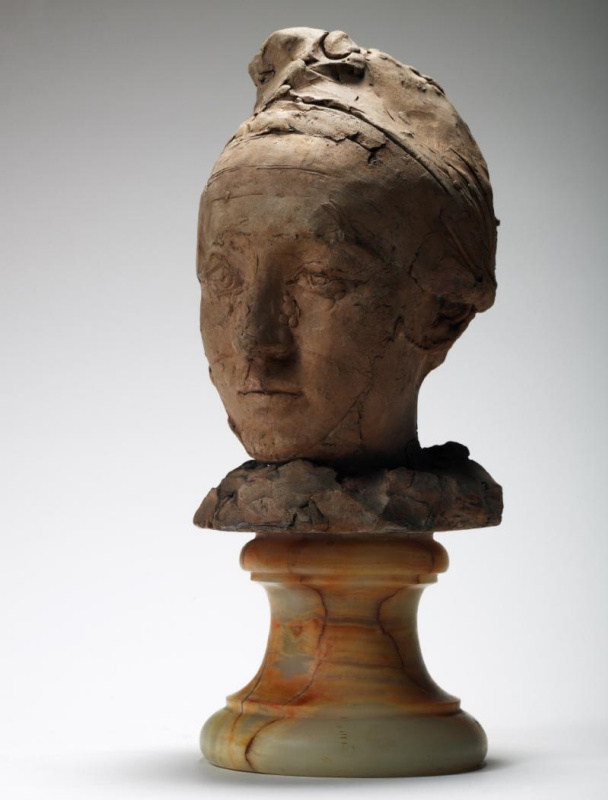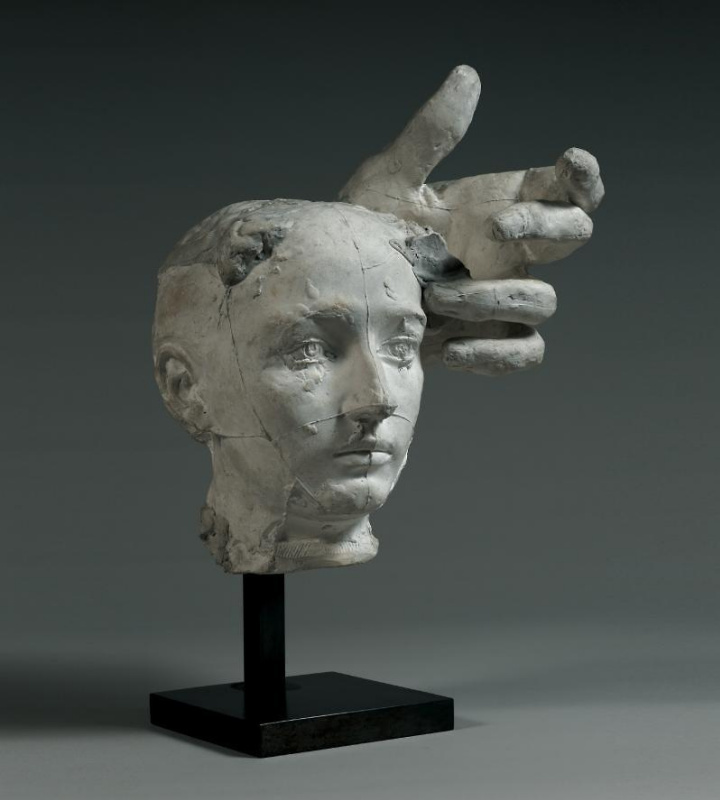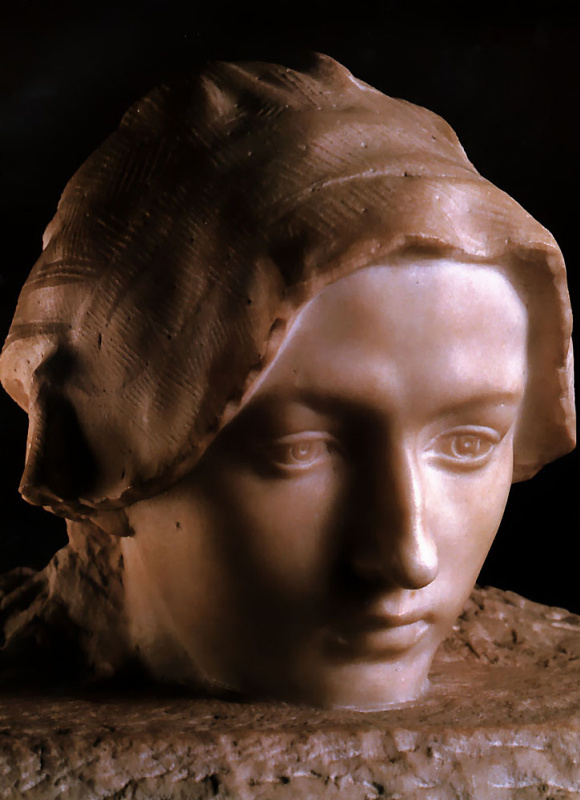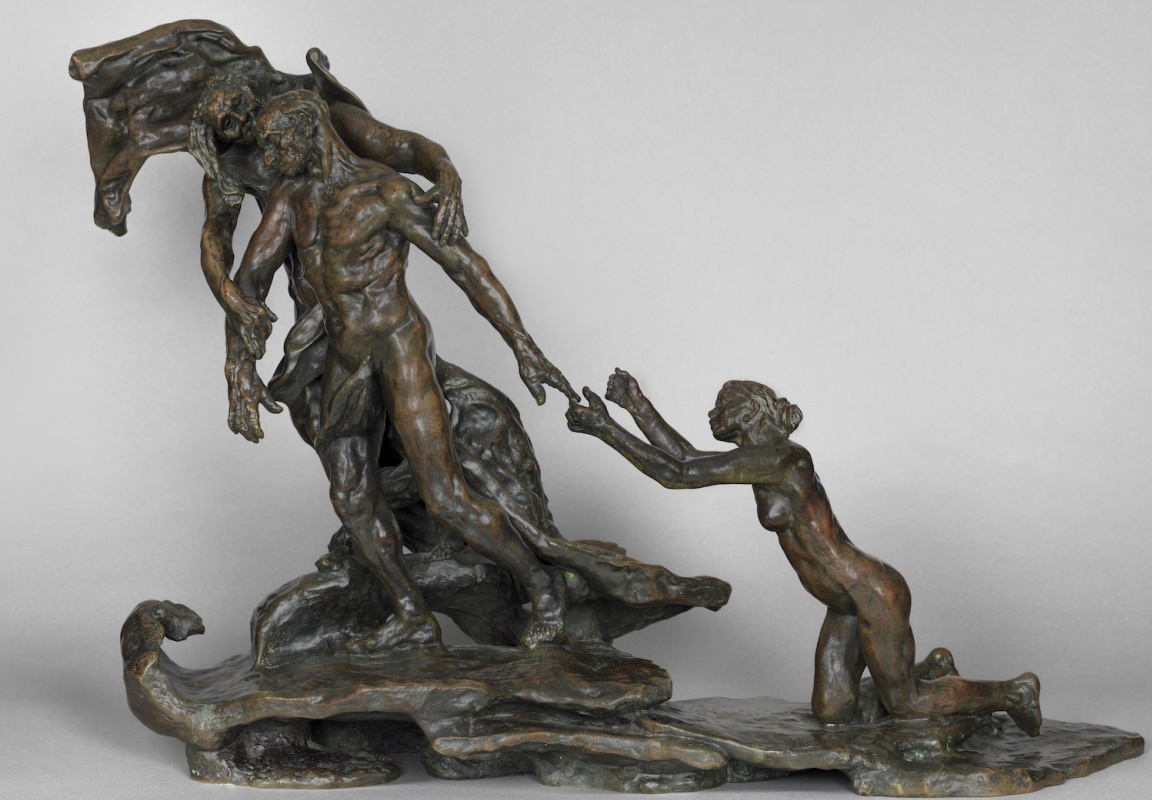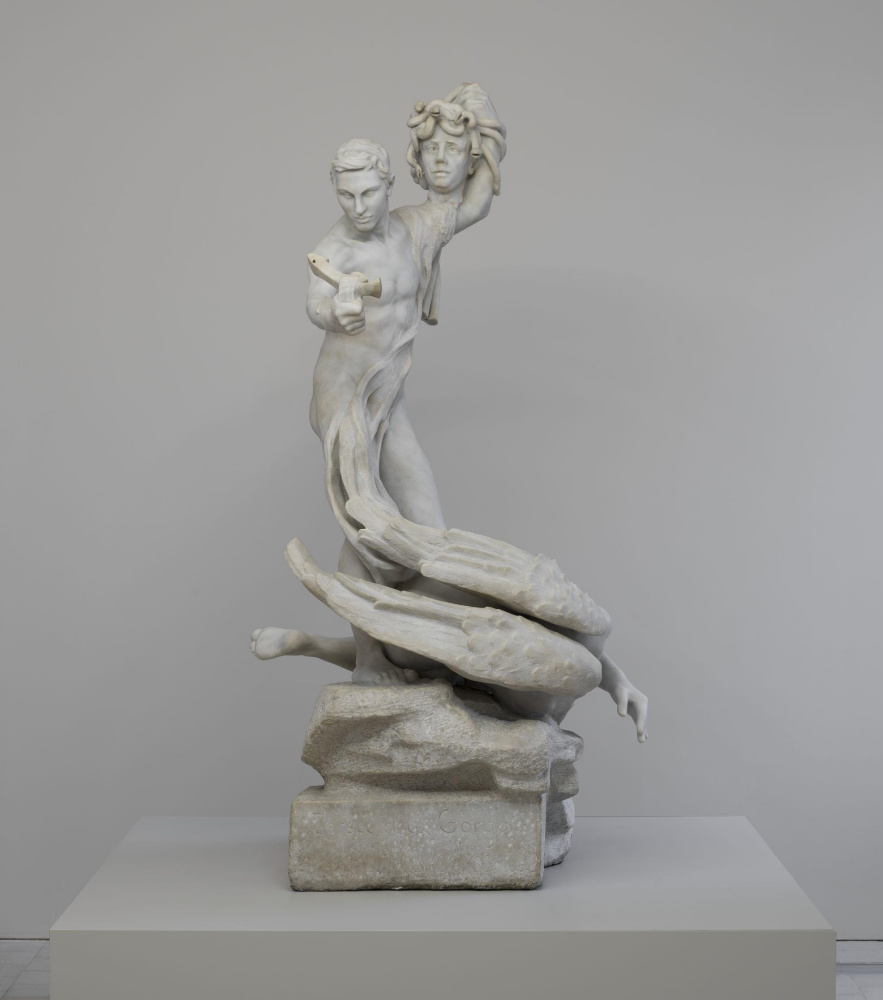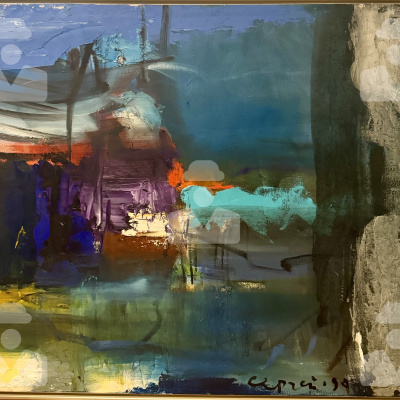The biographers of Rodin do not like to tell about his love affair with Camille Claudel. It is difficult to say whether he was a beautiful prince or an unhappy, honest, lifeless lover who has lost his head in this story. She was only a part of his long life. And at the same time it would not be able to tell almost anything about Camille without mentioning Rodin: he was a teacher, her only beloved and a man, who involuntarily destroyed her life to the core. Even after he disappeared from her life, he continued to cast an inexorably heavy shadow on everything she did. And this shadow buried down Camille Claudel.
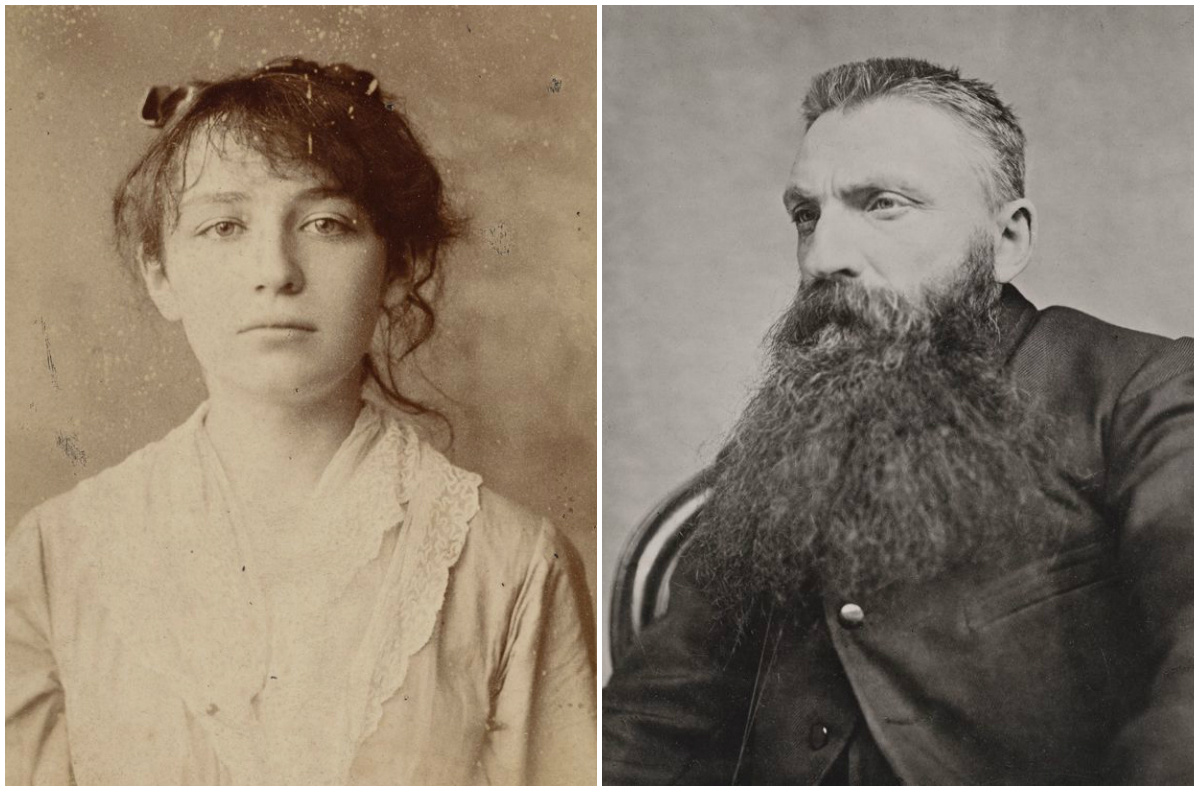
Revolt against nature
When Auguste Rodin was introduced to Camille, she was only 17 years old. He did not need neither apprentices, nor helpers — after long persuasion, he just agreed to look at the girl who, according to the stories, made some unexpected sculptural experiments in Rodin`s style. And she appeared to be frighteningly talented and close to him: they seemed to think alike, picked up each other’s thoughts, equally struck down seemingly steady academic art. Rodin was almost 40 years old, and what he managed was working as an apprentice, restoring other people’s works for dozens of years, preparing marble for someone else’s sculptures and decorating other people’s orders with hardly discernible friezes. He mastered his technique and increased his experience. Only a few years bebore that, he received the first state order and the ability to hire assistants.And Camille was a child prodigy. As a twelve-year-old girl in a small town in the north of France, she walked through the woods, dug clay, cleaned it of debris, turned the barn into a workshop, and used her younger siblings as sitters or apprentices. She sculpted everything: busts of relatives, plots of the novels she read, heroes and saints from the engravings she saw. "Something unique, a revolt against nature: a woman genius", Octave Mirbeau described her, not quite seriously and not as a joke.
Having moved with her family to Paris, Camille studied at the private Academy of Colarossi, where women were even allowed to study nude
. That was uncharted courage. After all, at that time women were not accepted under any pretext to the Academy of Fine Arts, even being at least three times genius. Visiting workshops was for free, and Camille worked in the studio 11 hours a day. This inhuman working capacity began to give results. In 1882, her work "Old Helen" was accepted in the famous Paris Salon for the first time.
At 19, she would be the only girl, assistant and apprentice, in Rodin`s completely male company. At first, she did nothing important: swept the workshop, built skeletons and scaffoldings, prepared clay and gypsum, and almost never talked. She seemed to be proving her physical endurance (in fact, sculpture requires strong physical form) and a willingness to give herself to the case. All this time she kept on working on her own sculptures, in anticipation of her teacher`s infrequent remarks. Gradually Camille became his first assistant: she sized models for the most popular sculptures, made sketches, hewed marble blocks, shared her ideas and inspired with confidence, force, youthful strength, and brilliant mind.
At 19, she would be the only girl, assistant and apprentice, in Rodin`s completely male company. At first, she did nothing important: swept the workshop, built skeletons and scaffoldings, prepared clay and gypsum, and almost never talked. She seemed to be proving her physical endurance (in fact, sculpture requires strong physical form) and a willingness to give herself to the case. All this time she kept on working on her own sculptures, in anticipation of her teacher`s infrequent remarks. Gradually Camille became his first assistant: she sized models for the most popular sculptures, made sketches, hewed marble blocks, shared her ideas and inspired with confidence, force, youthful strength, and brilliant mind.
La Valse ou Les Valseurs
1893, 43.2×23×34.3 cm
Waltzing
The next 10 years will be the most enriching for both: they sculpted and carved the marble in one workshop, exchanged ideas and gave each other advice. Their sculptures often became so similar that it was hard to tell who was the author, there was mutual influence. Camille worked with Rodin on the "The Gates of Hell" and "The Burghers of Calais": she sculpted the hands and feet for some of the figures, and then posed for others.A passionate, exhausting, and inspirational affair began. They had to hide it, so they met in a secret workshop, where no one else could come. And then he returned home to another woman he has lived with for more than 20 years, and to their common child. Rose Beuret did not understand sculpture, she didn’t pay attention to her husband’s work and could not support a conversation about the fate of art, she was not familiar with Rodin’s friends and colleagues, but she fed the family when they lacked money, grabbing for the most simple and tedious work. She waited patiently for Rodin, when he worked in Belgium: she kept his sculptures, raised their son, worked as a seamstress, and never complained. He could not leave Rosa now.
Knowledge of the affair agitated her family, especially her mother, who already detested her for not being a male child (who would have replaced her first-born male infant) and never agreed with Claudel’s involvement in the arts. As a consequence, she left the family house. "It is terrible to be so abandoned," Camille wrote. Now she financially depends on the person with whom she works, with whom she is in love and for whom she poses every moment when she is not busy with her work. Every year she sent her work to the Salon, every time they accepted her, praised in the newspapers — but no one was in a hurry to buy a sculpture or order one. At the urging of Rodin’s friend, only a few of her sculptures were to be found in museums. But this was not recognition at all. She was a talented pupil of Rodin — and in the eyes of the judges she would be one for the rest of her life.
Knowledge of the affair agitated her family, especially her mother, who already detested her for not being a male child (who would have replaced her first-born male infant) and never agreed with Claudel’s involvement in the arts. As a consequence, she left the family house. "It is terrible to be so abandoned," Camille wrote. Now she financially depends on the person with whom she works, with whom she is in love and for whom she poses every moment when she is not busy with her work. Every year she sent her work to the Salon, every time they accepted her, praised in the newspapers — but no one was in a hurry to buy a sculpture or order one. At the urging of Rodin’s friend, only a few of her sculptures were to be found in museums. But this was not recognition at all. She was a talented pupil of Rodin — and in the eyes of the judges she would be one for the rest of her life.
"Fate brought Rodin with a creature, it seemed, specially chosen for him from thousands. What a pity that only now he met the one that seemed to have been created to become his friend and pupil. She was young and charming, she was a rare breed… " Judith Cladel, biographer of Rodin, would write later.
Mature age
1893, 131×195×78 cm
Maturity
At first, Camille did not know anything about Rose Beuret, then she tried not to notice the signs of her existence and not to think about her distant rival, but a few years later the thought of another woman in Rodin’s life began to torment her. She tried to run and live without him, as if proving to herself that she could handle it. She moved for the whole spring to England, lived and worked there first with a friend, then with her brother. Then she returned and demanded from Rodin to sign an extravagant contract: he would never hire a female apprentice in his workshop and never marry her. Rodin missed her so much that he signed everything with enthusiasm.Camille traveled with her beloved teacher around Balzac’s native places, and together with him she collected information for future work on the monument. Some biographers say that the search for Balzac’s doppelgangers was only an occasion for joint travels and a cast-iron alibi for Rosa. But Camille demanded more, as she lost the only child conceived in these relations (after an abortion), she cried and screamed, begging for more time.
Rodin would say Rose incidentally that he is leaving for a couple of days, though disappeared for a month. He took Camille to Touraine to walk along the river, to view the old cathedrals, to fall asleep every evening with her in an embrace, as if it could last forever. In these trips they could spend the whole days together, they felt really good, but every time they got back to Paris, they renewed their secret meetings in a workshop on the Italian boulevard. By the way, their affair was not a secret for anyone — Rodin was pleased to get Camille acquainted with the collectors, sculptors, and artists from his circle.
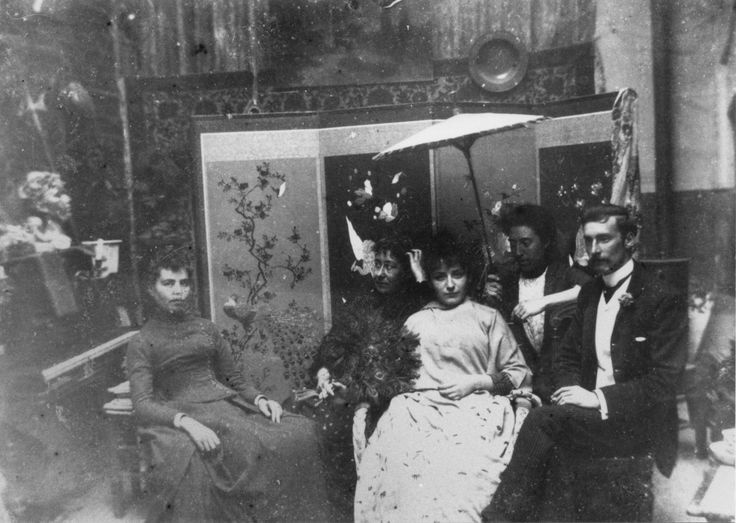
Camille Claudel (in the middle), her sister Louise (next to her) and the English sculptor Jessie Lipscomb (on the left), Paris, 1887. The bust of Louise is on the piano. Photo: pinterest.com
"Together with Rodin, Camille revolves at the highest levels in a society, gets to know the outstanding people of that era. Undoubtedly, Rodin prefers to be with his beautiful, cheerful and witty girlfriend, and not with Rosa, who keeps in the shade. Camille Claudel is at the Goncourt, at Daudet, at Octave Mirbeau. She is interested by serious critics, especially Mathias Morhardt, at that time the editor of the newspaper "Tan", who will do a lot for her later," says Reine-Marie Paris, the author of the book about Camille Claudel.
But with each return, Camille was only getting worse. She was almost 30 years old, but she still remained a student and mistress.
But with each return, Camille was only getting worse. She was almost 30 years old, but she still remained a student and mistress.
Персей и Горгона
1897, 196×111 cm
Perseus and the Gorgon
The breakup was inevitable, but very difficult. Their connection did not stop for a painfully long period. At first, Auguste and Camille saw each other occasionally, congratulating each other on success. Rodin wrote letters to the ministry and his friends-critics so that they pay attention on his student. She responded increasingly sarcastically and angrily to Rodin — he was a socialite, and his workshop has turned into a commercial conveyor. He tried to help Camille with money and recommendations, feeling guilt before her. They would like to have things going in another way.Camille had a short, probably innocent, affair with Claude Debussy. She worked as an obsessive, full of ideas and energy — already in her own workshop, without Rodin, she created incredible things, like "Waltz" and "Clotho." She was readily accepted at exhibitions, magazines wrote about her. But whenever a state order opportunity opened before it, the deal was disrupted or canceled without explanation. Camille became a beggar, she barely supported her sculpture workshop, made models of some household things for modest money, she often denied the invitations of her old acquaintances telling them she did not have a hat or shoes to go out. Sometimes, she took a train and came to Medon to hide among the trees next to Rodin`s new villa waiting for his return. Either a mental disorder was gaining strength, or a prolonged depression led to a breakdown and obsession. She began to see Rodin in all the misfortunes around her: she accused Rodin of stealing her ideas and of leading a conspiracy to kill her, hiring the servants, passers-by, and acquaintances for this.
"And then, there came July of 1913, when the inhabitants of the old house on the Bourbon quay had to intervene, worried that in the apartment on the first floor the shutters were always closed. Who is that unsociable and cautious person, that could only be seen in the mornings, when she took scarce food delivered to her doorstep? Once, two stout hospital attendants of a psychiatric clinic forcefully penetrated the apartment, where they found its frightened inhabitant, who had long been waiting for them surrounded by plaster and dried clay sculptures. According to them, the mess and dirt in the dwelling were indescribable. On the walls were attached with pins 14 of the Stations of the Cross (Way of Sorrows), cut out with scissors from the cover of the magazine. An ambulance was waiting for them in front of the house. Camilla was taken to the clinic. I had to take such a step … and this is for 30 years, " Camille`s brother Paul recalled.
"And then, there came July of 1913, when the inhabitants of the old house on the Bourbon quay had to intervene, worried that in the apartment on the first floor the shutters were always closed. Who is that unsociable and cautious person, that could only be seen in the mornings, when she took scarce food delivered to her doorstep? Once, two stout hospital attendants of a psychiatric clinic forcefully penetrated the apartment, where they found its frightened inhabitant, who had long been waiting for them surrounded by plaster and dried clay sculptures. According to them, the mess and dirt in the dwelling were indescribable. On the walls were attached with pins 14 of the Stations of the Cross (Way of Sorrows), cut out with scissors from the cover of the magazine. An ambulance was waiting for them in front of the house. Camilla was taken to the clinic. I had to take such a step … and this is for 30 years, " Camille`s brother Paul recalled.
Rodin didn’t have to worry about money any longer. His assistants had no time to resize the models of the artist`s famous sculptures, that were cast in dozens in his workshop. But the new works, created after the break with Camille, lacked dizzy sensuality. The greedy maidens changed one another in his Paris studio and in bed, Rosa was aging while waiting for Auguste at the villa in Meudon, but the time when he could love woman’s body, to sculpt it every day, listen to her and telling her things she would understand, share the workshop, ideas, works, and to see how the pupil surpasses all expectations, has passed away.
Camille would spend the last 30 years of her life in the mental asylem. There she would be offered clay and an opportunity to work, but she refused and never created anything again. Several times doctors tried to convince her family, mother and brother, that she no longer needs to stay in the institution, but they kept her there. Paul Claudel visited his confined sister seven times in 30 years, her mother didn`t even come there. There were rumors that Rodin sent her money to the hospital until death, in fear to appear in person and to cause another attack.
Camille would spend the last 30 years of her life in the mental asylem. There she would be offered clay and an opportunity to work, but she refused and never created anything again. Several times doctors tried to convince her family, mother and brother, that she no longer needs to stay in the institution, but they kept her there. Paul Claudel visited his confined sister seven times in 30 years, her mother didn`t even come there. There were rumors that Rodin sent her money to the hospital until death, in fear to appear in person and to cause another attack.
The title illustration: Camille Claudel, 1884. Auguste Rodin, 1889. Photo: vanityfair.fr
Author: Anna Sydelnykova
Author: Anna Sydelnykova







